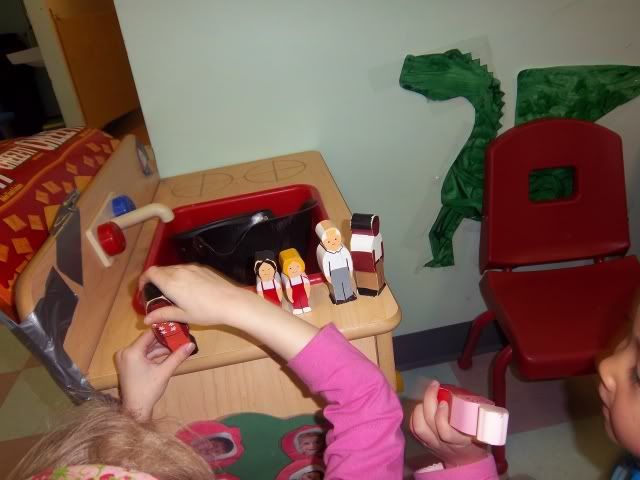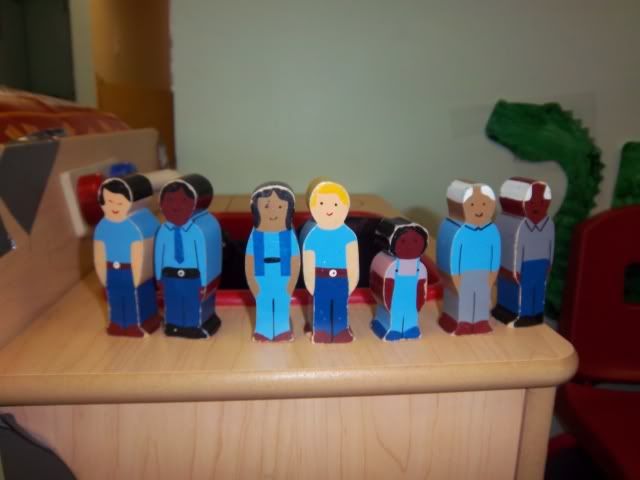My former classroom's dramatic play area had a bin full of wooden dolls for the dollhouse. They came in every ethnicity you could think of, although they all tended to wear the same monochromatic shirts and pants. One of my students was meticulously sorting out the dolls, placing the white dolls with the other white dolls, the Chinese dolls with the other Chinese dolls, etc.
I asked what she was doing, and she replied with, "Making the families!"
I asked her how she knew which dolls belonged in which families. To that she replied, "I look at the color of their faces."
Out of no where, I suggested to her, "Well, what about their shirts instead of their faces? We could make a family of all red shirts."

To give you an example of our diverse family, I present to you the "Blue Family":

The best part was that, not only did the family members have different skin tones, but none of the families were of the normative "Grandpa, Grandma, Mom, Dad, Sister Brother" grouping. Some families had all men as the adults. Some families were primarily made up of the "Grandparent" dolls. My students might not have walked away thinking, "Families come in all shapes and sizes and I should adjust my thinking accordingly!" But this little activity helped lay the groundwork for a different way of viewing families. And this isn't even factoring in the mathematical skills gained by sorting dolls according to shirt color.
All this, from simple "playing".
And this is why I love early education.

No comments:
Post a Comment